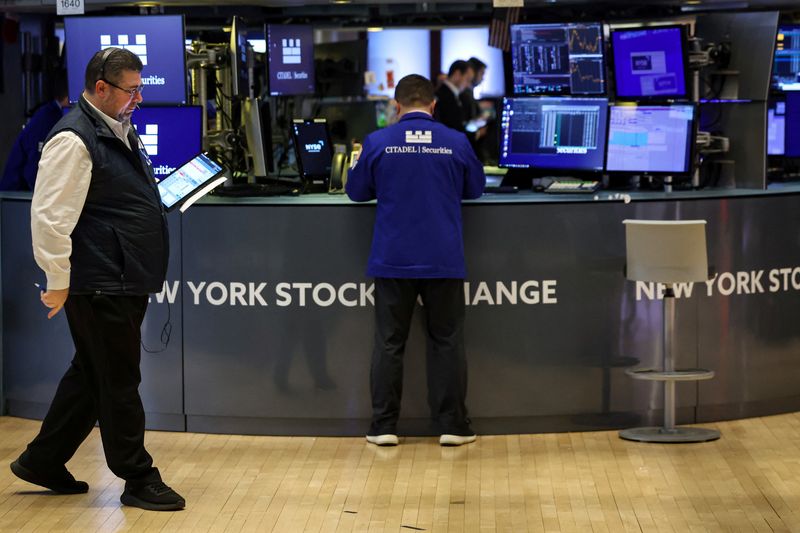Wall Street Drops as Trump’s Auto Tariffs Weigh on Sentiment
New York, NY – March 27, 2025
Wall Street closed lower on Thursday as investor sentiment soured following President Donald Trump’s announcement of new tariffs on auto imports, raising fears of escalating trade tensions and their ripple effects on the U.S. economy. The S&P 500 fell 0.4%, the Dow Jones Industrial Average shed 221 points—or 0.5%—and the Nasdaq Composite declined 0.5%, reflecting a broader market unease as the implications of the 25% tariffs on imported vehicles and parts began to sink in.
The tariffs, unveiled late Wednesday, target all cars and light trucks not manufactured in the United States, with additional duties on auto parts set to take effect May 3. Trump framed the move as a cornerstone of his “America First” economic agenda, aimed at bolstering domestic manufacturing. However, the decision has rattled financial markets, with analysts warning of potential disruptions to global supply chains, higher consumer prices, and retaliatory measures from key trading partners like Canada, Japan, and the European Union.
Auto stocks bore the brunt of the sell-off. General Motors plummeted 7.7%, while Ford dropped 3%, as investors fretted over the impact on companies reliant on cross-border production networks in North America. Car-parts manufacturers Aptiv and BorgWarner each saw declines of 5.5%, underscoring the broader industry fallout. In contrast, Tesla bucked the trend, rising 4.6%, buoyed by its predominantly U.S.-based production and analysts’ views that it could emerge relatively unscathed. Other electric vehicle makers, Rivian and Lucid, also gained 6.1% and 1.7%, respectively, suggesting a potential shift in market dynamics favoring domestic producers.
The market’s reaction reflects growing uncertainty over Trump’s trade strategy, which has oscillated between threats and rollbacks since he took office in January. Investors had hoped the tariffs might be softened through last-minute negotiations, but Trump’s firm stance has dashed those expectations. “The markets are jittery because nobody really knows what’s going to happen next,” said Nicolas Lin, chairman and interim CEO of Aether Holdings. “This is a trade negotiation tactic, but the unpredictability is what’s spooking Wall Street.”
Beyond autos, the tariffs have fueled broader economic concerns. Gold prices surged 1.1% to $3,052.04 an ounce, nearing record highs as investors sought safe-haven assets. Bullion miners like Newmont and Barrick Gold each rose about 1.5%, reflecting the flight to safety. Meanwhile, Treasury yields remained relatively stable, with the 10-year note ticking up slightly to 4.36%, as markets grappled with competing pressures of inflation fears and economic slowdown risks.
Global reverberations were swift. European automakers like Volkswagen, BMW, and Mercedes-Benz saw their shares slide, collectively losing billions in market value, while Japan’s Toyota and South Korea’s Hyundai also took hits. Canada, a major U.S. trading partner, signaled potential retaliatory duties, and the EU vowed to seek negotiated solutions. Japan’s Prime Minister Shigeru Ishiba hinted at a robust response, keeping “all options on the table.”
Despite the gloom, some economic indicators offered a mixed picture. A report showed fewer-than-expected unemployment claims last week, suggesting resilience in the job market, while revised data indicated slightly stronger growth in the final quarter of 2024. However, these positives were overshadowed by tariff-related “chaos” cited by businesses in a recent Institute for Supply Management survey, hinting at a looming threat of stagflation—a rare scenario where growth stagnates amid rising prices.
Trump has touted April 2 as “Liberation Day,” when he plans to roll out “reciprocal” tariffs tailored to match trade barriers imposed by other nations. While he has suggested flexibility in negotiations—hinting at a possible TikTok deal with China—analysts remain skeptical. “The big concern is that this shake-up of global trade won’t end with next week’s announcement,” said Howard Woodward, a bond portfolio manager at T. Rowe Price in London. “It raises the question of how far Trump is willing to push this.”
For now, Wall Street remains on edge, caught between hopes of a milder outcome and fears of a full-blown trade war. As the first quarter of 2025 nears its end, the S&P 500 is poised for its first quarterly decline in six quarters, and the Nasdaq faces its steepest drop in nearly two years. With uncertainty as the only certainty, investors are bracing for more volatility ahead.
